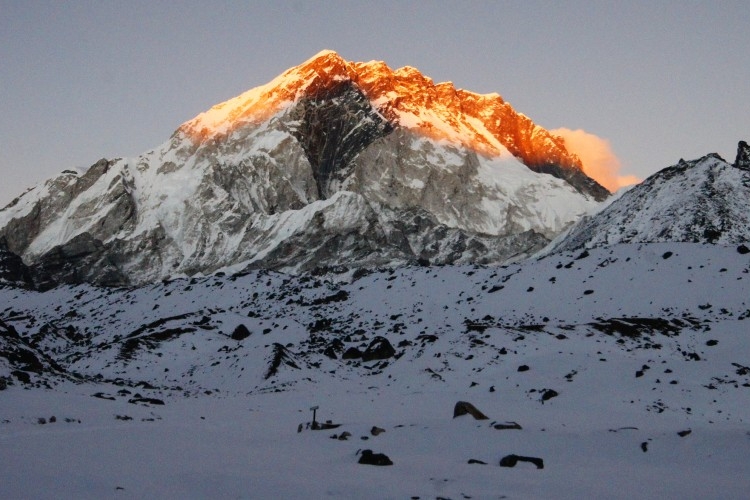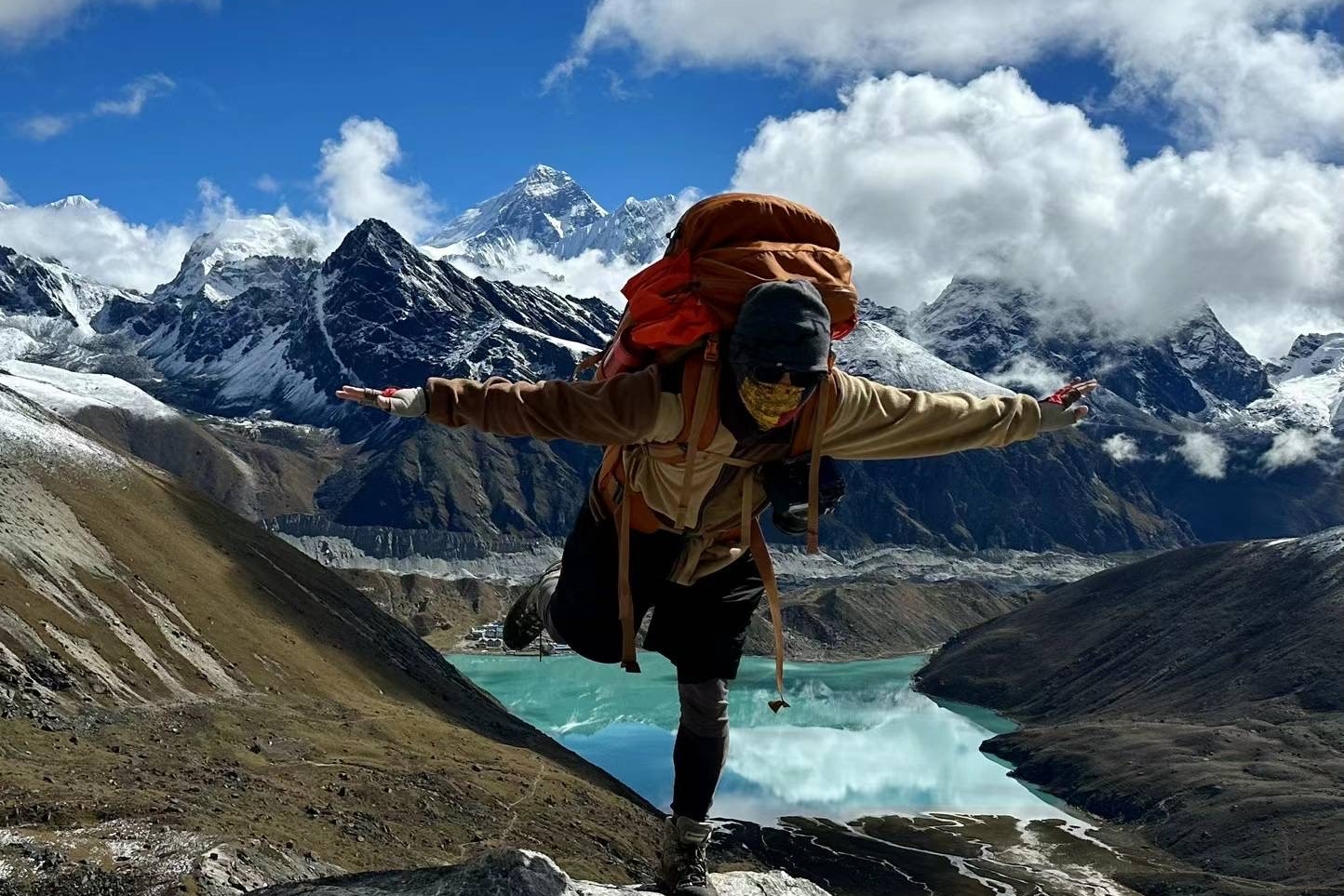

A representative from Bharal Adventure shall greet and escort the guests to their hotel upon arrival. The guests will be flattered with savory taste of authentic Nepali delicacies introducing them to Nepali food culture for dinner in the evening.
A guided tour around the historically and spiritually significant landmarks in Kathmandu will be scheduled after breakfast. These landmarks constitutes of Pashupatinath Temple, Swayambhunath – the Monkey Temple, Boudhanath and Kathmandu Durbar Square. In the afternoon, pre-trip discussion session will be arranged enabling the interaction between trek leader, crew and the guests.
On this day, we will start the early morning drive to Jiri which is about 187km north-east of Kathmandu which will take about six to seven hours. From Jiri, we continue our drive to Bhandar from where our trekking starts. You will be accompanied with the views of Koshi River and mountains such as Ganesh Himal, Langtang Lirung and Dorje Lakpa.
Descending down the trail through deep forests across few streams, we will pass a small settlement of Dokharpa and Baranda. From here, we climb through the forest winding down to the Surma Khola from where we continue walking to Likhu Khola Valley. Climbing a ridge up to a settlement of Kenja, we take a steep ascent to Chimbu from where we walk further until we arrive at Sete.
Climbing up to Lamjura La through the forests of magnolia, pine, maple, birch and rhododendrons, we pass the villages of Dagchu and Goyem. The Lamjura La Pass stands at the height of 3,530m which is the highest point between Jiri and Namche Bazaar. From here, after enjoying the mountain and panoramic views, we descend down to Tragdobuk and Junbesi where we will spend the evening exploring the villages.
We climb up the forest slope after crossing the stream beyond Junbesi and trek for an hour to come to the point where we can enjoy the views of the mighty Himalayas such as Mount Everest, Lhotse, Nupte, Makalu, Thamseruku, Mera Peak among others. From here, we continue on our trail to Salung and descend to Ringmo Khola then ascend to Ringmo and cross Trakshindo La Pass and descend to Trashingdo. Descending further for a hour through the rhododendron forests and terraced fields will bring us to Nunthala.
On this day, we descend down to the trail to Dudh Koshi River from where we follow the river as we head up to Khumbu. Crossing the bridge, we climb to Jubing and continue along the straight path to Churkha. From here, we climb the trail eastward to reach Khari Khola and descend to cross a suspension bridge. Another steep climb from here will take us to Bupsa.
Climbing up the trail through forested stretch, we pass Kharte and take an uphill climb to Khari La Pass where we enjoy the mesmerizing views of Gyachung Kang and Khumbila mountains among others. From here, we descend to Puiyan and further up and downhill walk will take us to Surke.
Climbing toward Charurikharka (yak pasture), we trek up to Chhiplung from where we descend down to Phakding. We will spend the remaining afternoon hours exploring the village.
A hike through the villages of Benkar, Chumoa, Monjo and Jorsale will start until the team disembarks the entrance of Sagarmatha National Park. After passing the confluence of Dudh Koshi and Bhote Koshi Rivers, followed by a final steep ascent of about two hours, the team is rewarded with the first sight of Mt. Everest peering over the Lhotse-Nuptse ridge. It requires an hour and half hike from here to Namche Bazaar.
This is a day for acclimatization that is spent either with a day’s hike to Syangboche Airport (3,700m), supposedly the highest airport in the world. From here, climb to Everest View Hotel will be taken from where we shall have panoramic views of Everest, Lhotse, Amadablam, Tawache, etc. A visit to Sherpa Culture Museum and Everest Photo Gallery will be made on our way back. If not, exploration of Namche Bazaar itself could be arranged where the travelers will have a chance to discover and learn about the Sherpa culture, biodiversity of the Everest region and assortment of things related to the first Everest ascenders.
Enjoying the marvelous views of Mt. Everest, Mt. Nuptse, Mt. Lhotse, Mt. Ama Dablam and close up view of Thamserku, the trek from Namche Bazaar to Tengboche comes to an end. The team treks towards Pangboche and then descends to Kayangjuma. After passing through Sansa, the major trail junction to Gokyo Valley and Everest Base Camp, the team disembarks at Phunki Thenga for lunch and rest. It requires a short tough climb from here to Tengboche. Lunch is provided at Phunki Thenga.
The day begins with the flawless view of the monastery at Tengboche with the mountains at its backdrop. The team will take the upper trail to Pangboche village passing through a number of Chortens and Mani walls and small hamlets. The afternoon will be made blissful with a walk north to Pheriche or eastward trail beneath the towering north face of Mt. Ama Dablam. A moderate walk to Imja Valley, descending through the confluence of the Lobuche River followed by the steepest climb of the day takes the team to Dingboche.
The climb to Duglha traverses through Khumbu Khola Valley. The valley from Dusa, a yak herder’s place, begins to narrow and we continue through Phulung Karpo and ascend to Chola Lake to Duglha accompanied throughout the journey by tranquil views of Mt. Cholatse, Mt. Thamserku and a number of other magnificent peaks.
A steep climb through the terminal in moraine of the Khumbu Glacier passing through boulder-strewn slopes ascends to Chupki Lhara, on top of which memorials to American mountaineer Scott Fischer and 10 times Everest submitter Babu Chiri Sherpa (a Nepali mountain guide) is located. The trail from here ascends to Lobuche where the team stays overnight.
On this day, the trek along the trail to Gorak Shep goes through the lateral moraine of the Khumbu Glacier convoyed with the revelation of Mt. Everest, Mt. Pumori, Mt. Mahalangur, Mt. Lingtern and many more. A small ascend to Thangma Riju with further steep climb through the torrent of Changri Glacier takes us to Gorak Shep. A quick lunch is served at Gorak Shep after which the trail to Everest Base Camp through the once immense Gorak Shep Lake is taken. The team returns back to Gorak Shep for the night.
The several hours ascend to Kala Patthar sets off before the first day light breaks to see the mystifying sight of sunrise engulfing Mt. Everest into its embrace. Breakfast is served upon the return to Gorak Shep. The team visiting Everest Base Camp on this day will have early breakfast and start their hike. After the return of both teams, lunch shall be served at Gorak Shep and descend to Pheriche commences.
The route traverses through Dunghla, Khumbu Khola, Pheriche, Orsho and Shomare until Pangboche from where the footsteps are retraced down to Imja Khola and up through the forest to Debuche. If the trek is organized during the full moon of November or December, the convoy acquires a chance to witness the Mani Rimdu festival in Tengboche. After lunch in Tengboche, the trail follows the Dudh Koshi gorge descending rapidly through pine forests disembarking at Sansa moving further down up to Namche Bazaar.
Despite the route being the same, the journey from Namche Bazaar to Lukla feels completely different blessed with the views of open plains, rhododendron and pine forests and snowcapped mountain peaks.
The flight back to Kathmandu arrives early giving the guest time for planning a short excursion in and around the city or spending the day taking respite in their comfortable hotel rooms. In the evening, the last supper of the expedition is hosted by Bharal Adventure to cherish the successful closer of the journey.
The journey of a lifetime along the Himalayas comes to an end on this day. The guests are accompanied to the airport by one of the representatives of Bharal Adventure approximately three hours before their schedule flight takes off.
The trek via Jiri typically takes around 24 to 28 days, including acclimatization days and rest days.
Yes, trekkers need the Sagarmatha National Park Entry Permit and the TIMS (Trekkers' Information Management System) card for the Everest Base Camp trek, regardless of the route.
The trek is challenging and requires a good level of physical fitness. Prior trekking experience and cardiovascular fitness are beneficial due to the varying altitudes and long walking hours.
Yes, weather conditions, including snow and rainfall, can affect the trail. It's important to be prepared for unpredictable weather and be flexible with the itinerary.
In case of emergencies, helicopters can be arranged for evacuation, but it's crucial to have proper insurance coverage for such situations.








